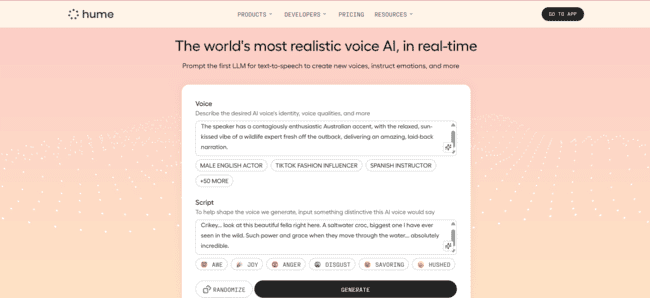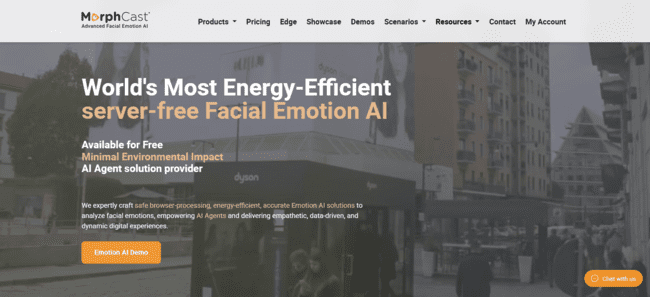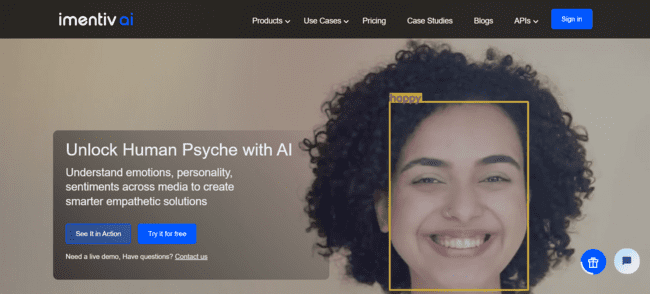Emotionally Intelligent AI Is Transforming Customer Service
In a high-stakes customer service center for a global airline, a frustrated passenger dials in after facing a prolonged delay. Before a human agent even answers the call, an AI system has already analyzed the caller tone, picked up vocal strain, and identified subtle cues of escalating anger. In real-time, the AI sends prompts to the human agent: “De-escalation mode activated,” “Use calming phrases,” and “Prioritize empathy.” What unfolds is not a mechanical exchange, but a personalized, emotionally attuned conversation that transforms potential dissatisfaction into loyalty.
Welcome to the transformative world of emotionally intelligent AI in customer service, where empathy meets automation, and emotion becomes the next frontier of digital engagement. As highlighted in AI business magazine features, this is one of the most impactful recent AI trends shaping customer experience today.
The Emotional Intelligence Revolution
For years, customer service has relied heavily on scripted responses, basic chatbots, and reactive support models. But the tide is turning. Emotion AI, or affective computing, is enabling emotionally intelligent systems that not only interpret what kind of things AI can do, but also how people feel in real time.
These AI systems are capable of detecting emotional states such as frustration, joy, confusion, or anxiety. More importantly, they can act on that data, adjusting tone, prioritizing tasks, and guiding human agents toward more compassionate interactions. This is ushering in a shift from reactive service to proactive, empathetic engagement.
“Emotion AI enables brands to respond not just to what a customer says, but how they feel,” says Rana el Kaliouby, co-founder of Affectiva, one of the pioneers in this space. “That emotional layer is the key to real, lasting engagement.”
Businesses are no longer satisfied with metrics like average handling time or call resolution. Today, the emotional tone of a conversation is increasingly seen as a strategic asset. Companies that understand and respond to customer emotion are gaining a distinct competitive edge.
Technology Deep Dive: How Emotion AI Works
Behind every emotionally intelligent AI is a sophisticated fusion of technologies, machine learning, natural language processing, computer vision, and more.
Let’s explore some of the core technical components driving this revolution.
Multimodal Emotion Detection
Modern emotion AI systems utilize a multimodal approach, analyzing various channels of data to assess emotional state:
- Facial expressions: Cameras and computer vision models detect micro-expressions, eye movement, and facial muscle tension.
- Voice analysis: AI decodes tone, pitch, speed, and stress in a speaker’s voice to infer emotions.
- Text sentiment: NLP models evaluate word choice, sentence structure, and punctuation to assess sentiment.
- Physiological signals: Wearable sensors (in health or call center contexts) may provide additional biometric data.
These multimodal inputs are fused to provide a more accurate, contextual understanding of a user’s emotional state.
Real-time Processing and Adaptation
Speed is everything. Advances in real-time AI processing allow systems to analyze emotional data instantly and adapt responses accordingly. For example, a conversational bot can detect sarcasm in mid-conversation and shift from scripted replies to a more nuanced, human-like interaction.
Hume AI’s “Octave” is a standout in this space. This emotionally intelligent text-to-speech platform not only generates speech with emotional inflection but also adapts tone based on the inferred emotional context of the conversation.
Machine Learning and Nuance Detection
Machine learning models evolve from basic polarity sentiment (positive, negative, neutral) to more sophisticated recognition of complex emotions, such as confusion veiled as politeness or anxiety hidden behind humor. Continuous training using diverse datasets is crucial to ensure cultural and contextual accuracy.
Integration Capabilities
Emotion AI is designed to integrate with existing customer experience platforms, CRM systems, call center software, chatbots, and more. API-based models from players like MorphCast and Imentiv AI allow seamless deployment, enabling emotion detection to become part of the enterprise tech stack without overhauling current systems.
Market Leaders and Emerging Innovators
Several companies are trailblazing the path in emotionally intelligent AI, each bringing unique innovations to the table.
Affectiva
Founded out of MIT Media Lab, Affectiva is a global leader in emotion measurement technology. Their solutions decode facial and vocal expressions to assess cognitive and emotional states, used in automotive, media, and customer service industries.

Hume AI
Hume is pioneering emotionally attuned AI models with a deep focus on empathetic interaction. Its Octave platform, launched in 2024, is capable of generating emotionally congruent speech, giving conversational agents a more human feel.

Cognigy
This German-based company integrates emotion detection with its conversational AI stack. Its virtual agents can not only detect sentiment but adjust flow logic based on emotion and hand off complex queries to human agents with real-time coaching tools.

MorphCast
MorphCast provides lightweight, server-free facial emotion recognition that can be embedded on websites or mobile apps. Its privacy-centric design is ideal for companies looking to maintain user trust while gaining emotional insight.

Imentiv AI
Imentiv AI offers multimodal emotion recognition APIs that combine voice, facial, and text analysis. Their technology is aimed at scalable customer experience solutions across digital platforms.

Business Impact: From Personalization to Retention
Emotion recognition isn’t just a tech novelty; it’s a strategic business asset.
Here’s how it’s transforming customer service outcomes:
Enhanced Customer Experience
By interpreting emotional cues, systems can deliver tailored responses that feel personal and empathetic. This leads to higher satisfaction scores and stronger customer loyalty.
Churn Reduction
Emotion AI can detect rising frustration or disengagement early, triggering escalations, discounts, or human intervention to retain the customer.
Scalable Personalization
Emotional intelligence allows businesses to scale personalization efforts, delivering not just the right message at the right time, but with the right tone.
Agent Assistance
Customer service reps are under increasing pressure. Emotion AI assists by offering live feedback, stress alerts, and suggested interventions, helping agents stay composed and effective.
Omnichannel Consistency
Emotional data can travel across platforms, chat, email, phone ensuring that no matter how a customer reaches out, their emotional context remains intact.
Industry Use Cases: Emotion AI in Action
Emotion recognition is being applied across industries with impressive results:
- Call Centers: AI detects stress levels, coaches agents live, and escalates urgent emotional cases.
- Digital Banking: Emotionally intelligent bots recognize signs of financial distress and offer empathetic support.
- E-commerce: Emotional mapping identifies where in the customer journey frustration peaks, enabling UX optimization.
- Healthcare: Emotion AI supports telehealth platforms by identifying signs of anxiety or depression during video consultations.
- Travel & Hospitality: Airlines and hotels use real-time emotion data to defuse tension and enhance VIP service.
Ethical and Regulatory Considerations
Emotion recognition technology deals with sensitive personal data. As a result, it falls under scrutiny by global regulatory bodies.
EU’s Artificial Intelligence Act
The EU’s AI Act designates emotion recognition systems as high-risk, requiring organizations to meet strict compliance standards, including transparency, informed consent, and robust data protection protocols.
Privacy Concerns
Using emotion AI responsibly means clearly communicating what data is collected, how it’s analyzed, and who has access. Biometric data like facial expressions or vocal tone must be treated with the highest levels of security.
Ethical Deployment
Emotion AI must not be used for manipulation or covert surveillance. Ethical frameworks are needed to ensure systems are inclusive, non-discriminatory, and aligned with user intent. Regular audits and bias testing should be part of every deployment strategy.
Future Outlook: What’s Next for Emotionally Intelligent Service?
The future of customer service is not just automated, it’s emotionally aware.
Here’s what to expect:
Explosive Market Growth
With customer expectations rising, the global emotion AI market is expected to grow rapidly. Businesses are actively investing in solutions that promise stronger customer bonds and improved operational efficiency.
Advances in Deep Learning and Emotion Modeling
Future AI models will go beyond recognizing emotions, they’ll understand why someone feels a certain way, drawing on contextual cues and conversation history.
Ubiquitous Integration
Emotion recognition will become a default feature in CRM platforms, chatbot frameworks, and call center software, much like sentiment analysis is today.
AI-Human Collaboration
Far from replacing human agents, emotionally intelligent AI will augment them—creating powerful, hybrid teams where machines manage scale and humans handle empathy-driven decision-making.
Executive and Expert Perspectives
“Emotion AI is the next major leap in customer experience,” says Ulli Waltinger, Head of the Siemens AI Lab. “We’re moving from data-driven personalization to emotion-driven personalization, an entirely new paradigm.”
Dr. Lisa Feldman Barrett, a neuroscience professor studying emotion modeling in AI, adds: “The challenge isn’t just detection, it’s interpretation. Human emotions are complex, culturally influenced, and context dependent. AI that understands this nuance will define the next era.”
Customer service leaders echo similar enthusiasm. “Since implementing emotion AI in our call center, we’ve seen a 15% increase in satisfaction and a notable drop in churn,” shares Maria Chang, VP of Customer Experience at a multinational telecom firm. “The difference is empathy, now we can scale it.”
Final Thoughts: Building an Empathetic Future
Emotion AI represents more than a technological evolution,it symbolizes a shift in how businesses view customer relationships. It’s a move toward authenticity, toward being present and responsive not only to customer needs but to their feelings.
The companies that succeed in this new era will be those that combine cutting-edge AI with a deep respect for the human emotional experience.
Is Your Business Emotionally Ready?
The time to act is now. As emotionally intelligent AI becomes more accessible and integral to business strategy, organizations must ask themselves:
- Are we truly listening to how our customers feel?
- Do our current tools empower emotional understanding and response?
- Are we deploying these technologies ethically and responsibly?
Emotion AI isn’t the future, it’s the present. And it’s reshaping customer service into something profoundly human.



